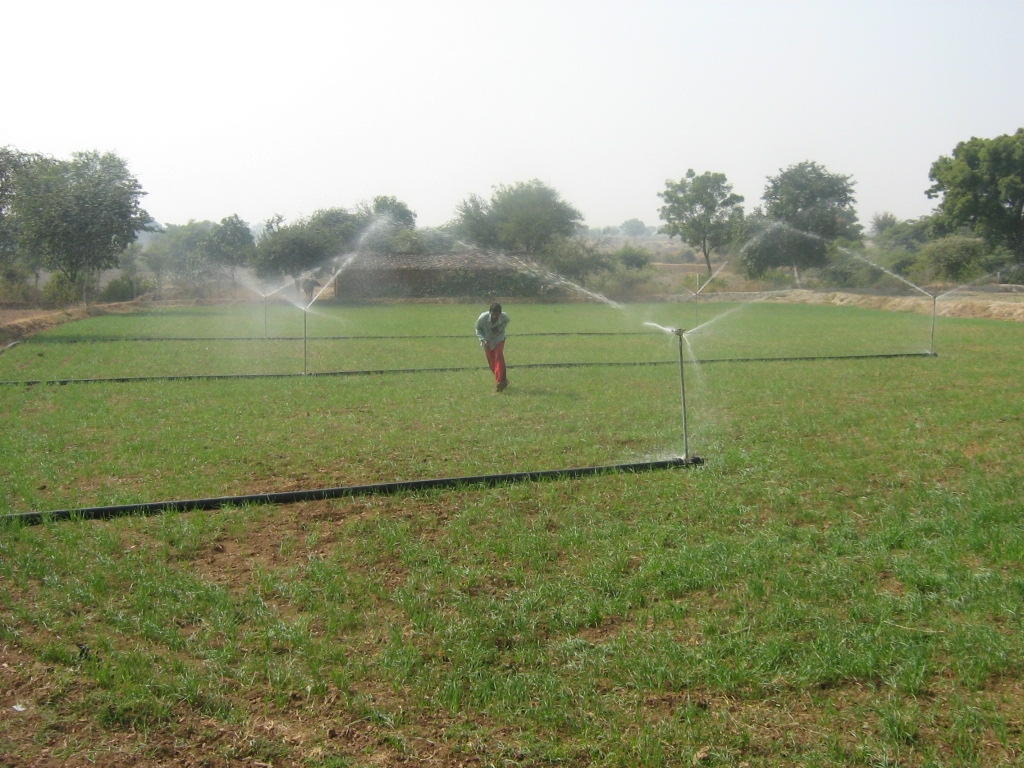|
Natural
Regeneration to Sustainable Utilisation:
TARAgram Pahuj
Most
predictions indicate that the world is heading towards an economic,
environmental and social catastrophe. TARAgram is today an appropriate
technology resource and training centre for the people of Bundelkhand
located in Orchha, Madhya Pradesh. The setting up building material
centres, a pilot handmade paper unit, and a biomass based gasifier unit
of Development Alternatives in a rural area has today evolved into a
model for creation of livelihoods in the villages in the vicinity of the
centre.
The Beginning of TARAgram
Pahuj, Jhansi (UP)
The pace of development has undergone a manifold increase and made an
effective impact on the lives of the people in a reasonable span of time
due to TARAgram near Orchha, and the Technology Resource Centre at Block
Niwari, District Tikamgarh (MP). These DA centres, where alternatives
and solutions to the local problems are identified with the involvement
of local communities to address the critical issue of sustainable
livelihoods, are based on local resources and technological innovations.
The DA group set up development services for the rural community at
TARAgram Pahuj in Jhansi district of Uttar Pradesh, based on the lessons
learnt from the interventions in the Madhya Pradesh part of Bundelkhand.
The centre formally started in January 2007 to promote the sustainable
livelihood mission for the rural sections of society. The initial
activities in this centre were primarily organised by mobilising the
community on land and water management and total sanitation issues and
formation of community institutions in the form of women SHGs in
Badagaon and Babina block in Jhansi district.
At the Campus

The entire campus of TARAgram Pahuj, is spread over 7.5 acres of land.
The technologies envisaged here are micro irrigation techniques, agro
forestry models, enhancing the soil fertility through green manuring,
the JAL TARA water purification system, roof water harvesting,
solar-based irrigation systems and plant nurseries. These solutions were
derived from surveys conducted to assess the local resource base and the
needs in Bundelkhand part of the UP while searching for a suitable
location to multiply the initiatives for sustainable livelihoods. A core
team was immediately formulated, consisting of multidisciplinary staff
from DA.
The guiding theme was ‘Regeneration to Sustainable Utilisation’ and to
improve the livelihoods of the underprivileged. Some of the first
efforts were aimed at rejuvenating the existing land use pattern, water
service delivery, water quality monitoring, and strengthening community
institutions. This also led to training of the workforce on land and
water management practices, formation of SHGs, and creating linkages
with stakeholders to strengthen the service and delivery to the rural
area.
The women groups were trained on leadership development, drudgery
reducing techniques, and enhancing thrifts and credit habits by
organising women SHGs.
Seeing is Believing
The available land in the campus is being utilised to demonstrate
different agricultural and water management-related activities for
creating awareness and organising training programmes for the nearby
farmers and the community groups. The demonstration effects of the
different activities enhance and improve upon the existing skills
through trials and experiences. The stakeholders were facilitated
through exposure visits where they could see and learn from the
different social and technological interventions.
After witnessing the demonstration of the drought-resistant variety of
wheat (Lok 1) and mustard (Pusa Bold) crops cultivated in the middle of
December, the farmers adopted these measures in their own fields. The
farmers expressed confidence after understanding the firsthand
information and utilisation of water in the cropping system.
Experiments were carried out with the sprinkler system for irrigation in
the Pahuj campus for proper utilisation of water resources for wheat and
mustard crops. This activity also helped the team in mobilising the
local farming community to understand the process and create a demand of
water conservation practices through this tool.
A farm pond was developed in the campus as a water mangement technique .
The excess water from near by canals was used to fill this pond. This is
now utilsed to enhance the cropping intensity by water management.
Reaching Out
On the establishment of TARAgram Pahuj, in the heart of Bundelkhand, the
local community, particularly the women are very excited and wish to
participate in the development interventions. Within a year, over 100
women SHGs, covering more than 1200 households, are ready to bring about
a desirable change in the collective behaviour to participate in the
mainstream of development activities. Even more village representatives
(Sarpanch) have approached DA in order to initiate similar activities in
their villages.
Involving the local community groups in the development services for
water and sanitation is gathering steady momentum. The beneficiaries are
primarily women and children. The public-private-community partnership (PPCP)
has demonstrated the sustained use of water. The participatory approach
adopted to enhance the adoption of the development interventions is also
being recognised by other stakeholders.
The Government departments and elected representatives of the villages
express their participation in DA’s water and sanitation programme. The
regional media has also highlighted the inauguration and opening of this
centre.
q
Dr Shailendra Nath
Pandey
snpandey@devalt.org
Back to Contents
|